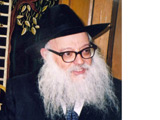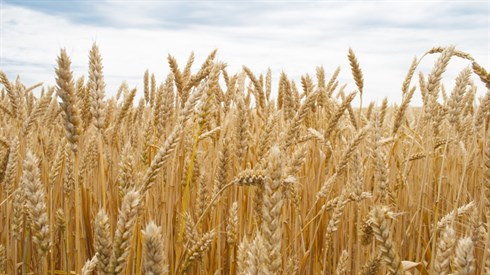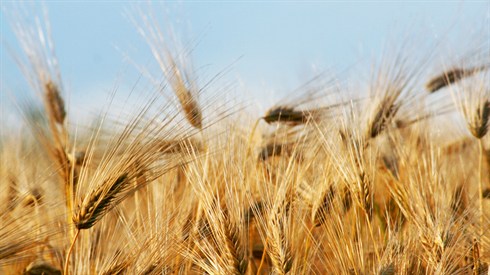- Family and Society
- Kashrut
25
"Are there any ‘take-home lessons’ I can learn from split hooves?"
Question #2: On the range
"Is there a variety of wild pig that chews its cud and is kosher?"
Question #3: Where the deer
"May I eat the fat of a reindeer? What about the impala, the dik-dik and the kudu?"
Question #4: And the antelope play
"Is the American pronghorn a kosher species?"
Foreword
In two places, first in parshas Shemini, and then again in parshas Re’eih, the Torah explains which species of animals, fish and birds are kosher. Since all of our opening questions are about the status of various kosher mammals, this article will limit itself to defining which of them is kosher and various other halachos that result.
Presumably, you noted that I used the word "mammal" rather than "animal" or "beast." To the best of my knowledge, there is no word in Tanach or Mishnaic Hebrew for "mammal." The Modern Hebrew word used is yoneik, which simply means "that which nurses," certainly an accurate definition of what separates mammals from other members of the animal kingdom. I am using the word "mammal" as an easy and accurate way to distinguish what the Torah calls "animals that are upon the ground" from the birds, fish, sea animals, creeping creatures, locusts, insects, invertebrates and reptiles whose halachic status is discussed in the Torah.
Introduction
The Torah writes, "Hashem spoke to Moshe and to Aharon, saying to them: ‘Speak to the Children of Israel, saying, these are the beasts from which you may eat. From the animals that are upon the ground: Whatever has a split hoof that is separated completely and is ma’aleh geirah [usually translated as "ruminating" or "chewing its cud"] among the animals: Those you may eat'" (Vayikra 11:1-3). The Torah then lists three animals, the camel, the shafan and the arneves [intentionally not yet translated] as being non-kosher because they do not have fully split hooves, although they are ma’aleh geirah. Finally, the Torah mentions that a pig is not kosher, even though its hooves are completely split, because it is not ma’aleh geirah.
Thus, the Torah defines any land animal with a totally split hoof that chews its cud as kosher. These two signs are possessed by sheep, goats, giraffe, deer, antelope, cattle, buffalo, bison, yak and okapi. The okapi lives in deep forests in the Congo, has a skull almost identical to that of a small giraffe, and, indeed, possesses split hooves and is a ruminant.
Does it ruminate too much?
"Ruminating" means that an animal has many stomachs (sometimes described as a stomach with several chambers) and chews its food in two stages. First, it harvests grass, leaves and/or other vegetation which it deposits into the first chamber of its stomach, the rumen, where it is fermented and begins to decompose. The partially digested food, now called "cud," is regurgitated back to the mouth, where it is chewed again to further break down its cellulose content, which is difficult to digest. The chewed cud then goes directly to the second chamber of the stomach, the reticulum and, eventually, to the last two chambers, the omasum and abomasum, where further digestion is assisted by various microorganisms that reside in the ruminant’s stomach. This is Hashem’s way of having grass, leaves, bark and tree roots (which the human stomach cannot digest), converted into products that can now benefit mankind in the forms of milk, cheese, meat, wool and leather.
The term ma’aleh geirah might include other processes that are not the same as chewing cud. Ultimately, the question is how we translate the non-kosher species that the Torah teaches are ma’aleh geirah but do not have fully split hooves. The Torah mentions three: the camel, the shafan and the arneves.
The camel chews its cud. Although its stomach has only three chambers, it still digests its food in a way similar to the four-chambered ruminants.
Hyrax?
The other two animals that the Torah describes as ma’aleh geirah are shafan and arneves. We are uncertain as to the identification of these two animals. In Modern Hebrew, the word shafan sela is used to mean hyrax, sometimes called the rock hyrax, a rodent-like mammal commonly found in wooded areas in Eretz Yisroel. I often see them in the wild, a ten-minute walk from my house. It is called the rock hyrax because they often stand on rocky areas in forests, and hide in holes between the rocks. The posuk in Tehillim (104:18), sela’im machseh la’shefanim, rocks are a refuge for the shefanim, indeed implies that shafan is indeed a rock hyrax. However, the difficulty with defining the shafan as a hyrax is because the hyrax is not a ruminant.
Hare or rabbit
Arneves is usually identified as a rabbit, a hare, or both. Hares and rabbits are similar to, but are not, rodents, and in modern science are categorized as lagomorphs. The main difference between hares and rabbits is the stage of development at which their young are born. Newborn hares are able to function on their own within hours, whereas newborn rabbits are blind and completely helpless. In any case, neither the rabbit nor the hare are considered ruminants.
Will the real shafan please stand up?
In a teshuvah on the subject, the Seridei Eish (Shu’t Seridei Eish 2:64) mentions several attempts to identify shafan and arneves. One approach insists that shafan and arneves cannot be hyraxes and hares, since neither of these species ruminates, but that shafan and arneves must be species that indeed ruminate and yet are not kosher. These would be species that, like camels, have partially, but not fully split hooves and are therefore called cameloids. However, the only species currently known to man, other than the camel, that fit this description are native South Americans of the llama family: the domesticated llama and alpaca, the vicuna, and the guanaco, which are collectively called lamoids. Since shafan is mentioned in Tanach several times as a commonly known animal, it is highly unlikely that it refers to a South American native that was unknown in the Fertile Crescent until well after the Europeans invaded South America in the beginning of the sixteenth century.
There are also descriptions of arneves in the Gemara (Megillah 9b) that indicate that, in that era, they were very certain how to identify an arneves, again making lamoids a very unlikely choice.
Another option is that shafan and arneves refer to Bactrian (two-humped) camels, native to China and other parts of Asia. However, this is also a difficult approach to accept, since the differences between the one-humped dromedary (also called Arabian camel) and the two-humped Bactrian are not distinctive enough to imagine that they would not both be called gamal by the Torah. I would like to note that the Gemara was well aware of the existence of dromedary and Bactrian camels, calling them Arabian camels and Persian camels, and insisting that they qualify as one species for halachic purposes (Bava Kama 55a). (Scientifically, they are treated as two separate species, Camelus dromedarius and Camelus bactrianus. By the way, Bactria was a country in today’s Afghanistan, bordering on Persia, so both the contemporary conversational term and the scientific terms for the two varieties of camel are identical to the way Chazal referred to them.)
Are you sure that you don’t ruminate?
The Seridei Eish also mentions a completely different approach, suggested by Rav Dovid Tzvi Hoffman, that although shafan and arneves are not cud chewers, they appear to do something similar to ruminating. A hyrax has a three-chambered stomach containing special bacteria allowing it to digest leaves and grasses, similar to ruminants that can digest leaves and grass. It is also interesting to note that hyrax babies are born without the bacteria they need for digestion. For nutrition, they consume the waste matter of adult hyraxes until they are able to eat. Apparently, the adult’s waste contains enough live bacteria such that the baby hyrax stomach is eventually able to digest the cellulose itself, without relying on reprocessed food. Mah rabu ma’asecha, Hashem!
It is possible that either the digestive system of the hyrax or its method of feeding its offspring may be what the Torah means, when it calls them maalei geirah.
Arneves
Rabbits and hares are not classic ruminants and do not possess the proper physiology for rumination, but instead digest through a process called hindgut fermentation. These animals and some rodents digest in a unique way, by the formation of cecotropes. Their first swallowing does not complete the digestion process, and they produce two different kinds of droppings: little black round ones and softer black ones known as cecotropes, or night feces, which they then eat and re-digest. The cecotropes contain lots of essential vitamins and protein. It is very possible that this process is what the Torah refers to as ma’aleh geirah, although it is not what is usually referred to as "chewing the cud."
On the range
At this point, let us examine the second of our opening questions: "Is there a variety of wild pig that chews its cud and is kosher?"
To the best of my knowledge, all members of the pig/hog family, including the boar, the South American peccary, the Indonesian babirusa, and various wild species that include the name "hog" or "pig" in their common name, such as the warthog, the bushpig, and the almost extinct pygmy hog, have split hooves, and are, to some extent, omnivorous. (Please note that hedgehogs and porcupines, despite the references to "hog" and "pork" in their names, are called this because they have long snouts reminiscent of pigs, not because they have split hooves.) Although South African rangers have told me that warthogs are exclusively herbivorous, research shows that they do scavenge dead animals and also consume worms and insects while foraging.
Several varieties of wild hog, among them the peccary, the babirusa, and the warthog, native to Africa, have more complicated stomach structures than does the common domesticated pig. Over the years, I have seen various news articles claiming that some of these animals are kosher, based on the assumption that they have both split hooves and ruminate. However, none of these species does, indeed, chew its cud; so, although they all have split hooves, as do all hogs, they are not kosher.
Although the posuk mentions only chewing the cud and split hooves as criteria for kosher animals, there may be additional reasons why wild hog species are not kosher. Based on a passage of Gemara, some authorities contend that any species of animal without any type of horn is not kosher (Shu’t Beis Yaakov #41, quoted by Pischei Teshuvah, Yoreh Deah 80:1), and the peccary, the babirusa, and the warthog have no horns. Although both the warthog and the peccary have tusks that look like horns, these are really oversized teeth and grow out of the mouth, not on the top of the head. By the way, many authorities disagree with the Beis Yaakov, contending that absence of horns does not define an animal as non-kosher (Pischei Teshuvah ad loc.).
Where the deer
The third of our opening questions began "Is the fat of a reindeer permitted?" Let me explain what is presumably being asked.
The Torah divides mammals into two categories, beheimah and chayah. Beheimah is usually translated as animal or domesticated animal, whereas chayah is often rendered as beast or wild animal. However, these translations of the terms beheimah and chayah are not entirely accurate. Although most domesticated species, such as cattle, sheep and goats, qualify as beheimos, there are species of beheimah, such as the African or cape buffalo, the Philipine tamarau and the anoa, a native of the Indonesian island of Sulawesi, that cannot be domesticated. (See the dispute between the Shulchan Aruch and the Rema, Yoreh Deah 28:4, which relates to the Asian water buffalo, domesticated already in antiquity.) On the other hand, some species of chayah, such as reindeer, are domesticated and raised as livestock in the northern regions of Europe, particularly by the Lapps (the Sami), as are other varieties of deer in central Asia.
So, what is the difference between a beheimah and a chayah? The Gemara (Chullin 59b) explains that it depends on the type of horn it has. If it is branched, as are all deer antlers, it is a chayah. The major noticeable difference between antlers and horns is that antlers shed annually (are deciduous) and are extensively branched, whereas horns are permanent and unbranched. Moose and elk have massive, branched, deciduous antlers, and are varieties of deer. All antelope (a general category that includes dozens of species) have unbranched horns, and therefore one would need to examine the horns of each species to determine whether it is a beheimah or a chayah, as I will explain shortly. Kudu, eland, gnu, impala and dik-dik all have unbranched horns and are varieties of antelope. The same is true of the dorcas gazelle which is a common species in Eretz Yisrael, and the largest permanent resident of the wooded area near my house where I often go for relaxing walks.
There are some other differences between antelope and deer; for example, antelope have gall bladders and deer do not. So, you can rest assured that your pet moose cannot develop gallstones.
What type of horn?
But what type of horn am I looking for?
If an animal possesses an unbranched horn, the answer as to whether it is a beheimah or a chayah becomes more complicated: If the horn has all three features that the Gemara calls keruchos, haduros and charukos, it is a chayah; if not, it is a beheimah. There are different opinions among rishonim how to explain and define these three words, which is why I have not translated them, and depending on this answer is whether different varieties of antelope may qualify as beheimah or as chayah.
What difference does it make?
There are a few mitzvos of the Torah that apply to a beheimah and not a chayah, and vice versa. Among these mitzvos is the prohibition against eating cheilev, the forbidden fat that protects the posterior-lying organs such as the stomachs and the kidneys, which applies only to a beheimah, but this fat is permitted on a chayah (Mishnah Chullin 89b). Another mitzvah is that of giving the zero’a, lechaya’im and keivah to a kohein, which applies only to a beheimah but not to a chayah (Yoreh Deah 61:17). A third mitzvah is kisuy hadam, requiring covering the blood of shechitah, which applies to a chayah (and to poultry) but not to a beheimah (Mishnah Chullin 83b).
Whether the fat is permitted depends on whether a reindeer is a beheimah or a chayah. If it is a chayah, the cheilev is permitted. All deer are known to be chayah because of their antlers, and therefore "reindeer fat" is kosher, if the reindeer is properly shechted.
On the other hand, when we have no mesorah whether a species of animal is a chayah or a beheimah, we treat it stringently both ways (Shach and Pri Megadim, Yoreh Deah 80:1). Therefore, unless we have a mesorah as to whether a specific species of antelope is a chayah or a beheimah, we would prohibit its cheilev and perform kisuy hadam, without a brocha.
And the antelope play
At this point, we can discuss the fourth of our opening questions: "Is the American pronghorn a kosher species?" I suspect that most of our readers have no idea what a pronghorn is, let alone whether it is a kosher species.
Most species of antelope in the world are in Africa. There are some in Eurasia; none are native to Australia or the Americas. However, the various fauna native to North America include a species called a pronghorn, which possesses characteristics similar to that of a deer or antelope but also is different from both deer and antelope. It is a ruminant that has split hooves. Thus, it meets the Torah’s definition of a kosher species, although I admit that I have never tasted pronghorn chops.
The horn of a pronghorn is unusual in that it branches into sharp front and rear sections that are reminiscent of prongs, hence its name. As I mentioned above, deer have multi-branched antlers, which are deciduous. Antelopes have unbranched horns that are permanent. The horn of a pronghorn falls off annually, which is like a deer and unlike any antelope species. On the other hand, the pronghorn has a gallbladder, which antelope have, but not deer. For these and other reasons, the scientific community considers a pronghorn to be neither a deer nor an antelope. Nevertheless, the Europeans who came to America called it an antelope, and Brewster M. Higley, who, in 1872, wrote the lyrics to the poem now called and sung as "Home on the Range," certainly meant the pronghorn when he referred to the playing of the "antelope."
Home, home
At this point, let us examine our opening question: "Are there any ‘take-home lessons’ I can learn from split hooves?"
Although we can never explain why Hashem commanded us His mitzvos, we are permitted to explore what lessons we can derive from them, provided we realize that these are merely lessons and not a reason allowing us to decide when and whether we observe the mitzvah. It appears clear that the birds that the Torah ruled to be non-kosher are, for the most part, predators, whereas the kosher birds tend to be the pursued.
Can we possibly present a logical reason why the Torah restricted our mammal consumption to ruminants with split hooves?
The following lesson might be why the Torah permitted only ruminants with split hooves. In general, animals that have split hooves flee from opposition. For example, Africa has dozens of species of antelope; when confronted by a lion, they run. On the other hand, a zebra attacked by a lion will fight, as will a honey badger. Perhaps this is a lesson to learn from a ruminant, to run as far and as fast as we can from any machlokes.
Ma’aleh geirah animals spend a lot of time consuming their food. It takes a long time for their food to complete being digested. They learn patience. Thus, perhaps the lesson here is to be patient when we fulfill our basic needs (Shu’t Beis Yitzchak, Even Ha’ezer, Tzela’os Habayis 5:8).
This Shiur is published also at Rabbi Kaganof's site

Tevila of Something that Turns into a “Meal Utensil”
Rabbi Daniel Mann | Cheshvan 25 5782

Some Contemporary Bishul Akum Curiosities
Rabbi Yirmiyohu Kaganoff | 5769

Bug-Free Tu B'Shevat
Rabbi Moshe Vaya | Shvat 4 5781

Chalav Akum – Non-Jewish Milk
Rabbi Avraham Rosenthal | Kislev 14 5781

Bnei Noach and Korbanos
Can a Gentile bring a sacrifice to Hashem
Rabbi Yirmiyohu Kaganoff

HaRav Abba Berman zt”l, an appreciation
Rabbi Yirmiyohu Kaganoff

How Is Our Maariv Structured?
Rabbi Yirmiyohu Kaganoff | Kislev 4 5778

Preparing Food on Yom Tov
Rabbi Yirmiyohu Kaganoff

P'ninat Mishpat: Unsuccessful Transfer of Yeshiva – part IV
based on ruling 82138 of the Eretz Hemdah-Gazit Rabbinical Courts
Beit Din Eretz Hemda - Gazit | Nisan 5784

The Solution to 'Risky' Intellectual Topics
Ayn Aya, Shabbat v, 72
Rabbi Ari Shvat | Nisan 5785
Daf Yomi Makkot Daf 12
R' Eli Stefansky | 22 Nisan 5785






